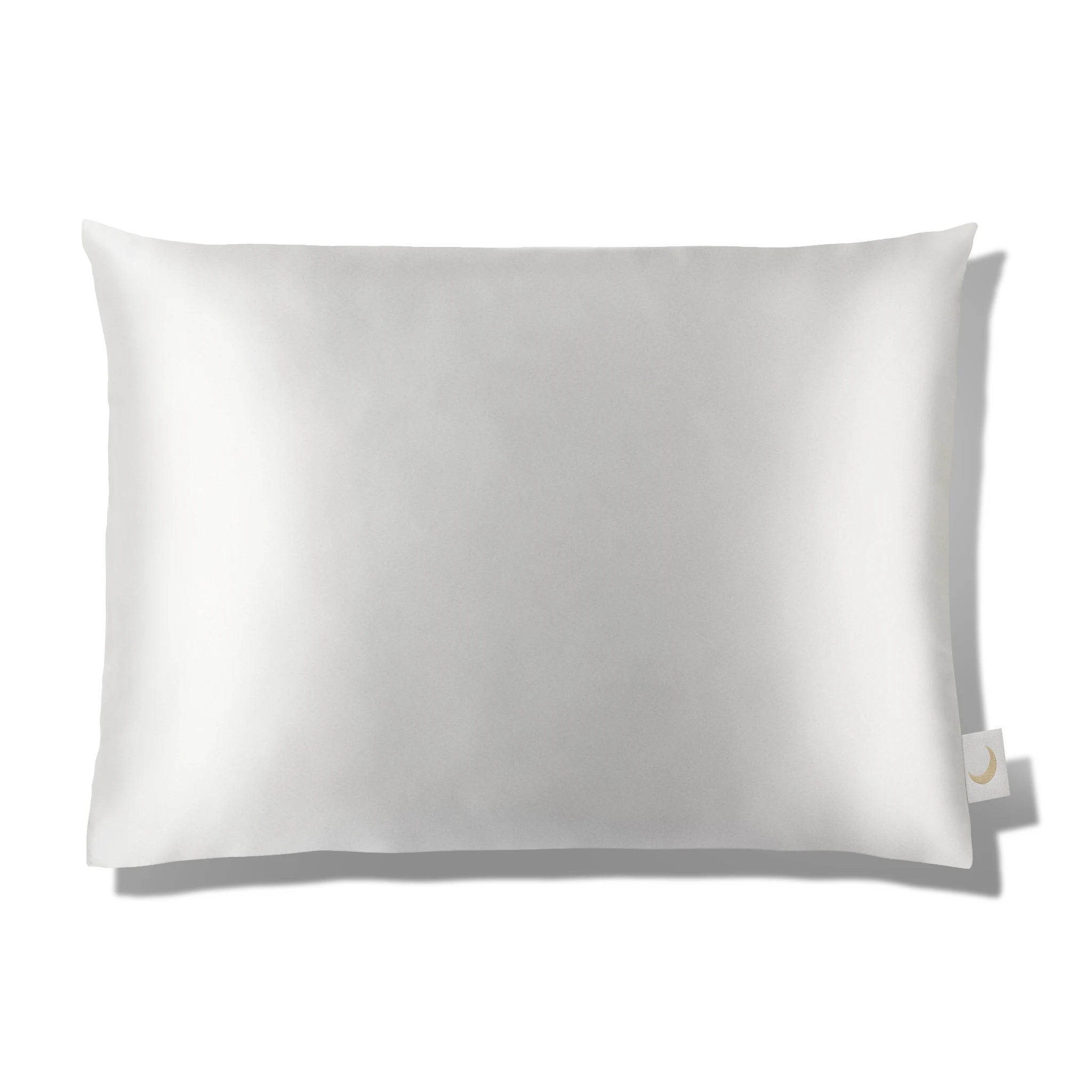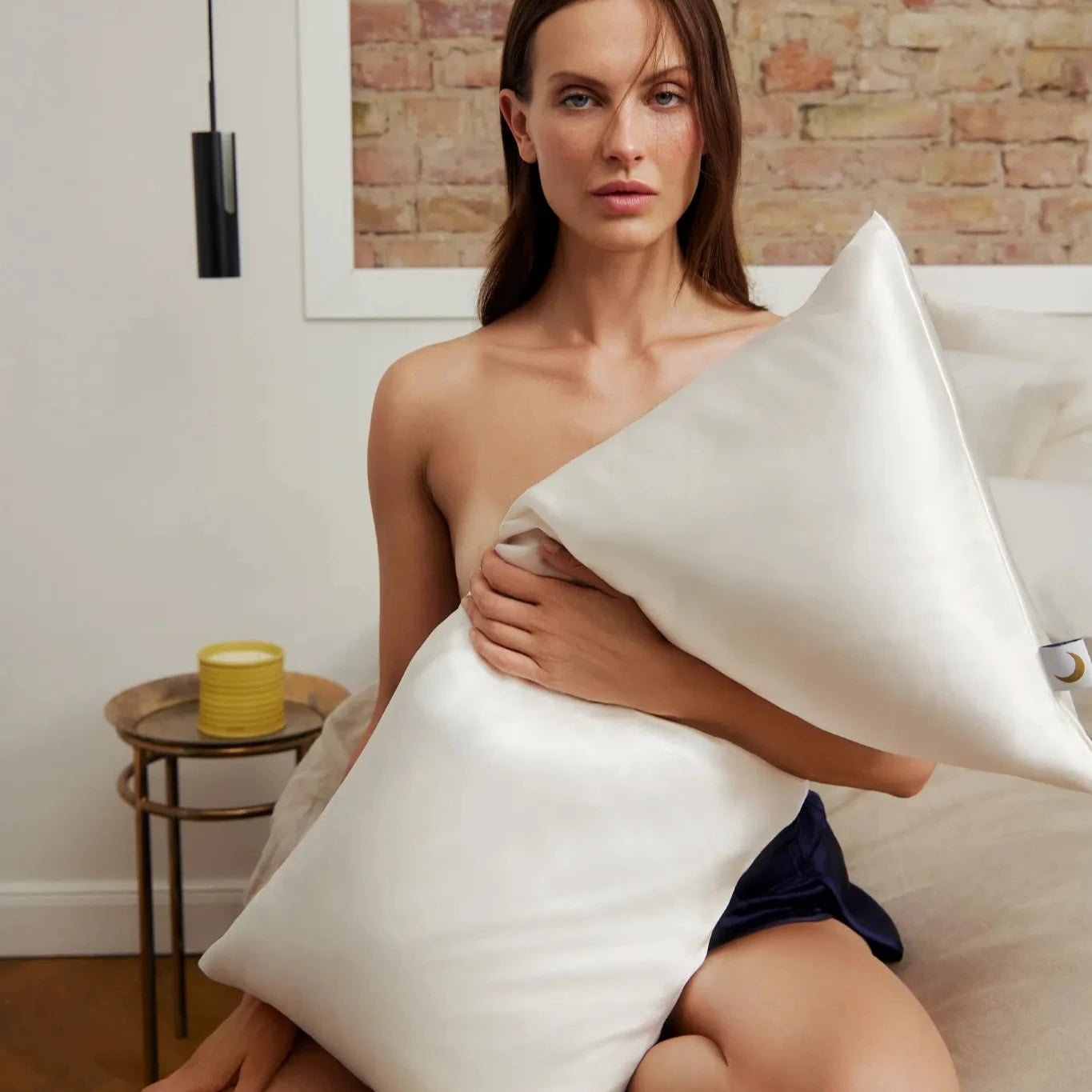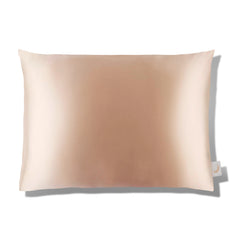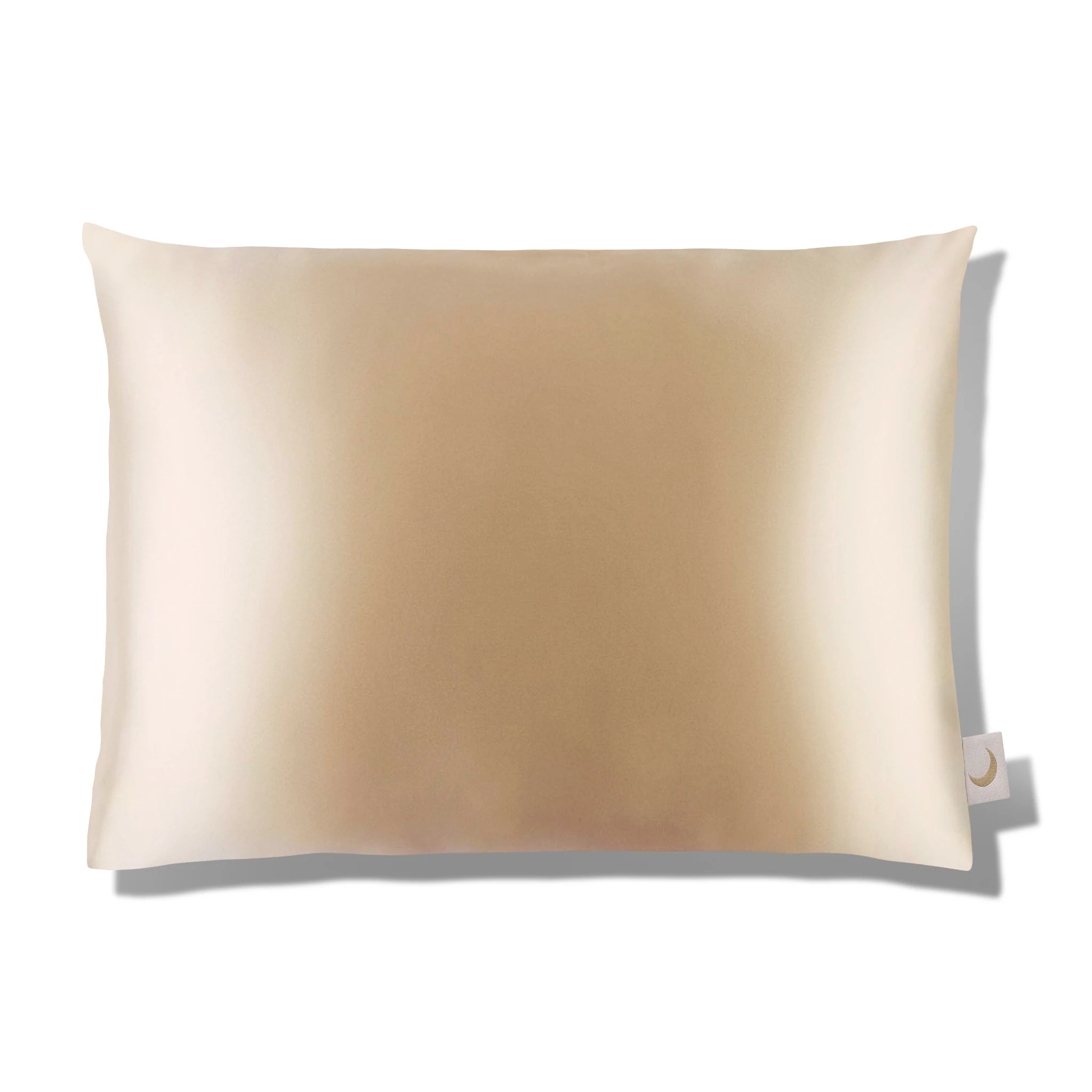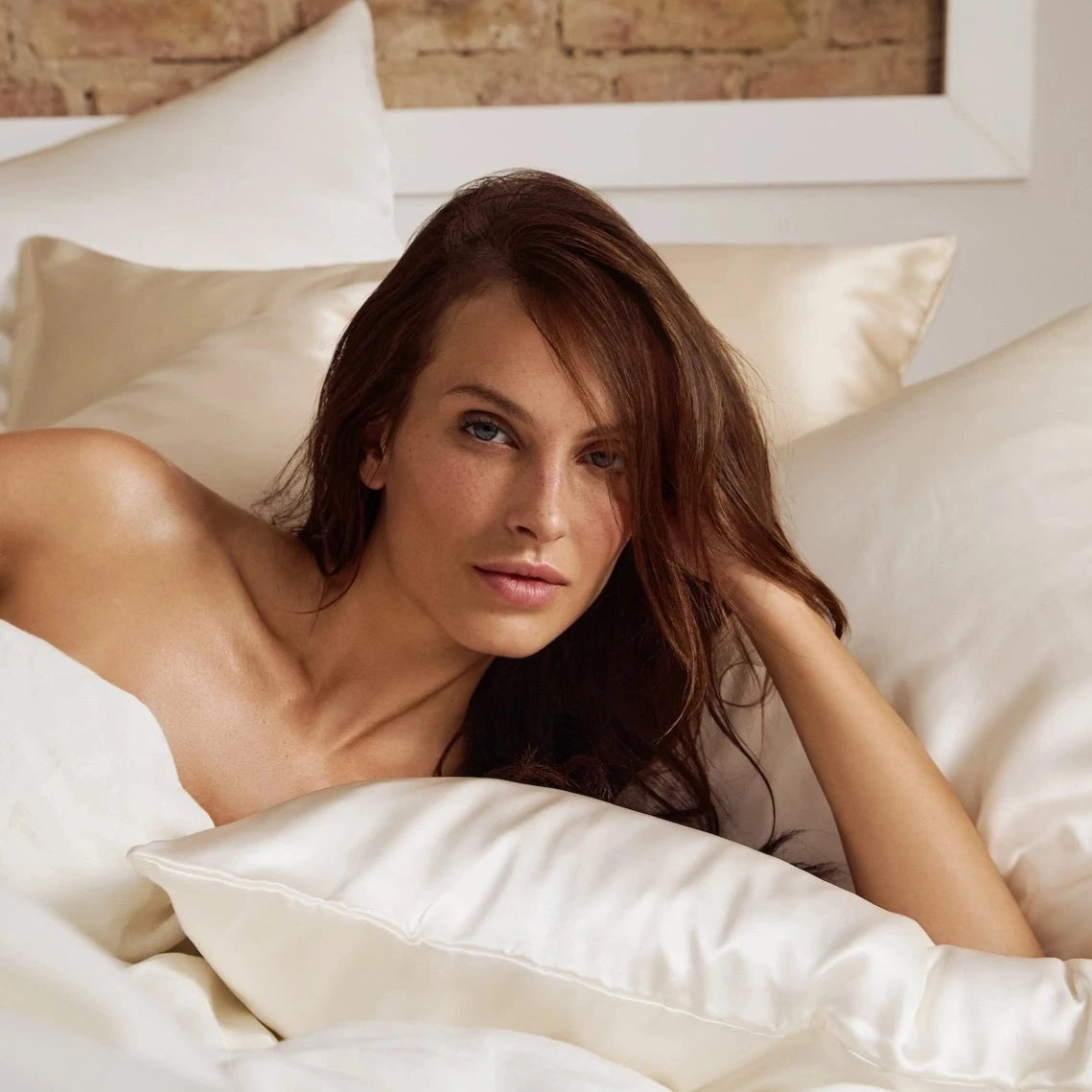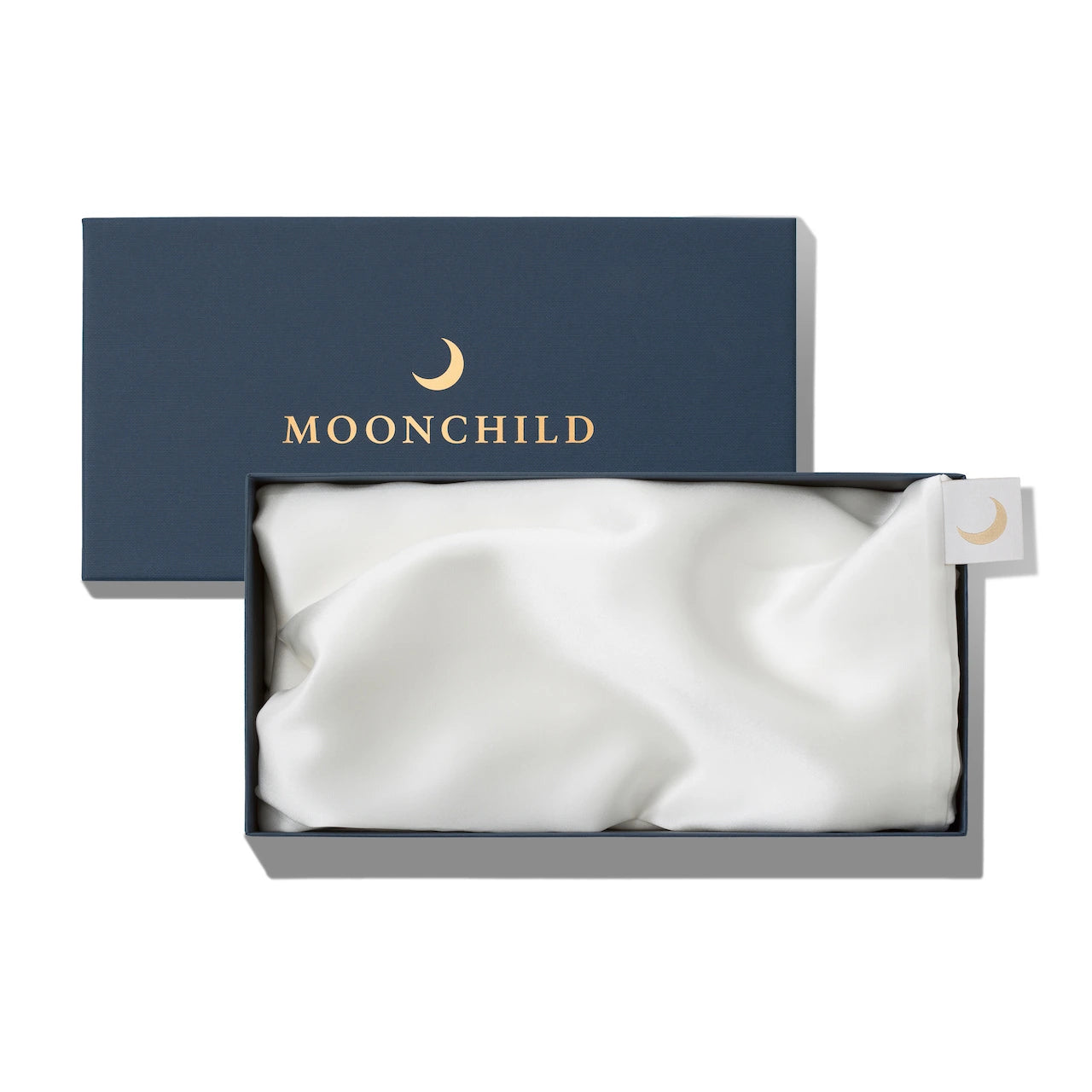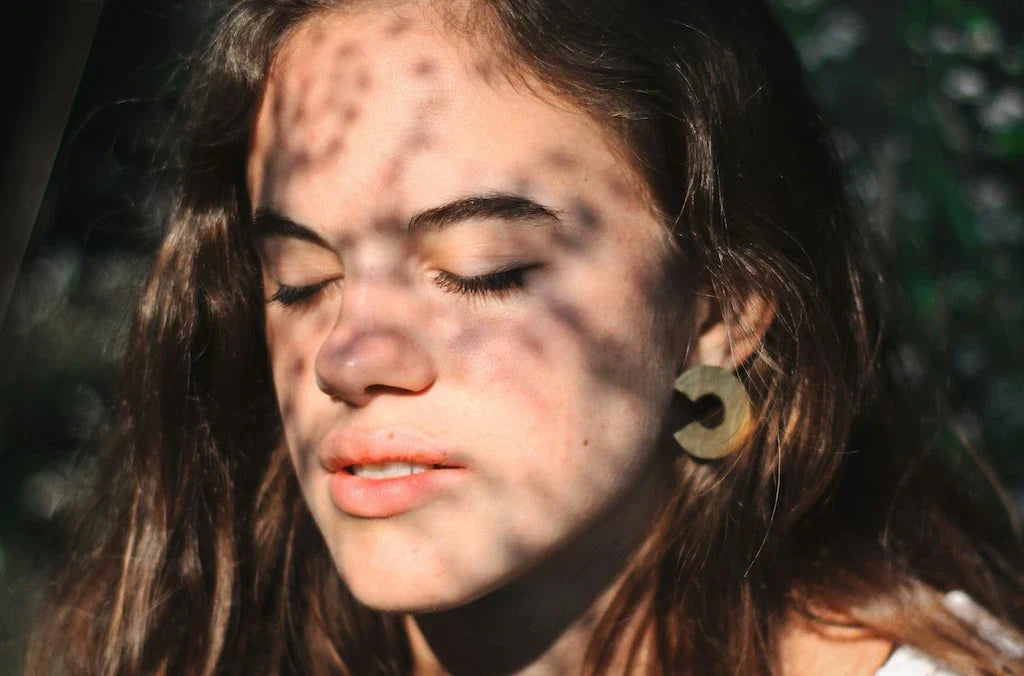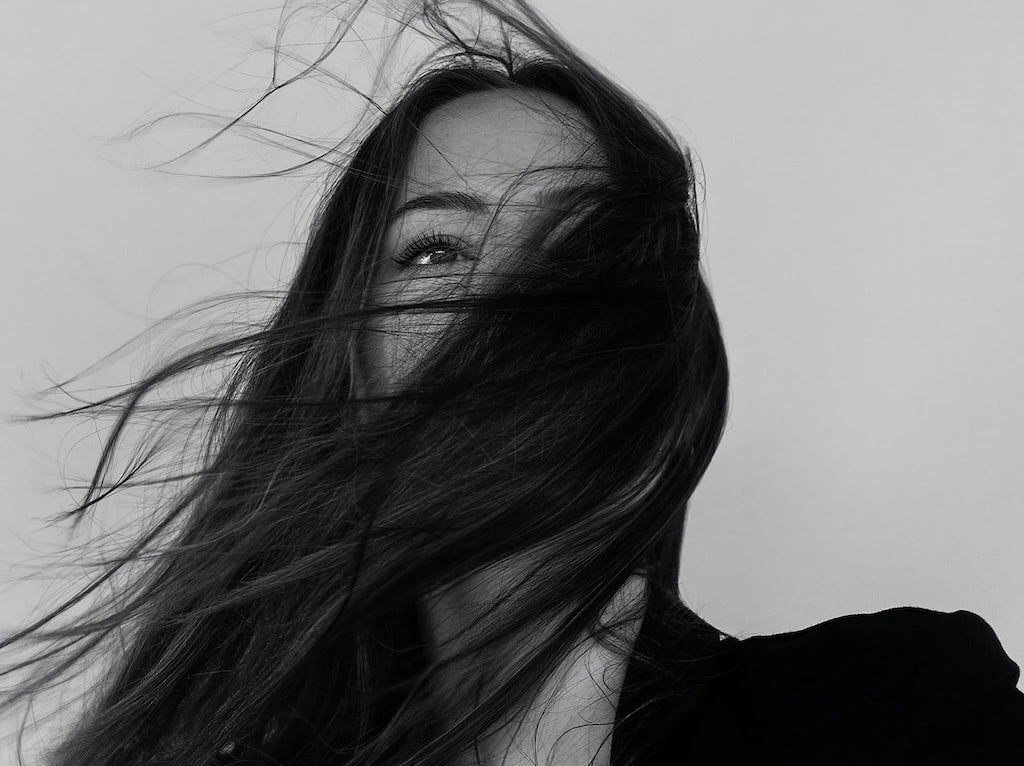Taking Sustainability to Its Logical Conclusion
Why we launched a Botanical Dye? Because it was the only logical conclusion to create the most sustainable silk pillowcases and linen bedding. Unlike conventional silk, no silkworms are killed in the production of Peace Silk. Moonchild silk is non-violent and vegan friendly, unlike almost all of its competitors. This silk is a pure natural product, free from harmful chemicals, whereas industrial silk often contains lead, barium and the like to make it heavier and therefore more expensive. No over-bred caterpillars are used and no pesticides are applied to the mulberry trees. Fair labor conditions apply throughout the value chain, from spinning to weaving and finishing. The weaving and sewing is done in the EU. In addition to the ecological added value, the social added value lies in creating fair working conditions and raising awareness of sustainability, natural textiles and ethical textiles. Moonchild is a sustainable brand at its core and lives and breathes economic sustainability.
How Silk is Dyed Organically
The classic Moonchild silk is dyed in Italy with GOTS certified dyes that meet the highest sustainability standards, but are not completely chemical free[1]. Users get a safe product that is free from harmful substances and allergens. Made in the EU guarantees the reliability of the whole process and the label. Organic dyes represent a small market segment, accounting for about 5-10% of global textile dyeing. Read our comparison of conventional vs. organic vs. botanical dyes.
Botanical Dye and Hemp Fixation – An Innovation
Taking sustainability to its logical conclusion, Moonchild is the first brand of silk pillowcases and linen bedding to use 100% natural botanical dyes. We have developed a new sustainable dyeing technique that offers a real alternative to conventionally dyed textiles and is therefore safer for the environment, textile workers and consumers. To date, there are only a few small suppliers of botanically dyed textiles on the market. But here is the catch: most botanical dyes use a non-natural color fixation, which would destroy the character of a pure natural dye. Typical color mordants would be iron or copper.
Moonchild dyes with pure natural and herbal ingredients: Lemon, turmeric, pear, mustard, coffee, cocoa, paprika, orange, carrot, wine, wild berries, rose, violet, charcoal, liquorice, apple, herbs, indigo, woad, spirulina or mint.
Moonchild developed the botanical dye collection with an innovative dye house in Italy that uses a hemp pectin based color fixation process and holds a patent for this process. Moonchild is the only brand that can guarantee an all-natural yet long-lasting color with its patented hemp-based color fixation. Creating a 100% pure natural silk pillowcase without the use of industrial chemicals is a world first. We always challenge the status quo of the textile industry. Read on why we think natural dyes are immensely important for ecology, consumer and worker safety.

Botanical Dye – Why We Developed Plant Dyes
Safe organic bedding helps us sleep better and therefore live better. As well as the user, the environment also benefits: conventional dyeing and finishing in the global textile industry is said to be responsible for 20% of water pollution[2].
Are traditional industrial chemicals actually harmful?
Approximately 40,000 to 60,000 industrial chemicals are in commercial use worldwide[3]. Only 33 of these are banned in textiles in the EU[4]. Common chemicals used in the textile industry are considered to be carcinogenic, toxic, known endocrine disruptors and can cause reproductive problems[5]. While it is not easy to to find a causality, there are a few studies worth examining.
A Harvard study found a significant link between textiles and skin rashes, itchy eyes, sore throats, shortness of breath and other health complaints[6]. Twenty-nine percent of textile workers in a Beijing study suffered from work-related contact dermatitis[7].
Unlike the food industry, textiles are not required to have a list of ingredients for the substances they use. Through prolonged skin contact or inhalation[8], textile chemicals can enter the body and be detected in the blood, lymphatic system and organs[9], posing a risk not only to the end consumer, but to all textile workers along the supply chain.
Our conventional textile industry is largely located in developing countries where workers' rights are not developed in the Western sense[10]. Yet we consume products from these value chains and benefit from low costs. Our Western world suffers from cognitive dissonance: on the one hand, our values oppose child labour, exploitation and pollution; on the other, there is consumer demand for cheap, ever-new products.
The Environmental Impact of The Textile Industry
The textile industry is thought to be responsible for up to 8% of global greenhouse gas emissions, significant pollution, impacts on biodiversity and water consumption of 215 trillion litres per year[11]. The global textile industry is the second largest user of water resources[12]. Twenty percent of global water pollution is caused by the textile industry[13]. Water pollution is caused by industrial substances such as textile dyes and finishes[14].
Sustainable innovations such as Moonchild Botanical Dye are not only demanded by informed consumers, they also play a key role in shaping future demand. This is because they create consumer understanding of commonly used chemicals and their sustainable alternatives. In terms of agenda setting, brands like Moonchild need to lead the way in creating and communicating sustainable alternatives, actively shaping sustainability communication and creating widespread demand.
We are shaping a better tomorrow, one night at a time.
Sources:
1. https://global-standard.org/images/resource-library/documents/standard-and-manual/Implementation_Manual_7.0_First_Revision_Draft.pdf
2.https://www.europarl.europa.eu/news/en/headlines/society/20201208STO93327/the-impact-of-textile-production-and-waste-on-the-environment-infographics
3. https://icca-chem.org/news/how-do-we-calculate-the-number-of-chemicals-in-use-around-the-globe/
4. https://sustainfashion.info/hazard-limitation-in-textiles-by-eu-rules/
5. Alden Wicker (2023). To dye for: how toxic fashion is making us sick and how we can fight back. G.P. Putnam's Sons.
6. McNeely E, Staffa SJ, Mordukhovich I, Coull B (2018). Symptoms related to new flight attendant uniforms. BMC Public Health. https://pubmed.ncbi.nlm.nih.gov/29295715/#full-view-affiliation-1
7. Chen YX, Cheng HY, Li LF (2017). Prevalence and risk factors of contact dermatitis among clothing manufacturing employees in Beijing: A cross-sectional study. https://www.ncbi.nlm.nih.gov/pmc/articles/PMC5371456/
8. Overdahl, E. (2021). Characterizing Exposure and In Vitro Effects of Azobenzene Disperse Dyes in the Indoor Environment https://dukespace.lib.duke.edu/dspace/handle/10161/24387
9. Alden Wicker (2023). To dye for: how toxic fashion is making us sick and how we can fight back. G.P. Putnam's Sons.
10. Paul David Blanc (2016). Fake silk: the lethal history of viscose rayon. Yale university press.
11.https://www.unep.org/news-and-stories/press-release/unep-and-un-climate-change-provide-fashion-communicators-practical#:~:text=The%20fashion%20sector%20is%20considered,trillion%20litres%20of%20water%20per
12. https://www.unep.org/news-and-stories/press-release/un-alliance-sustainable-fashion-addresses-damage-fast-fashion
13. https://www.geneco.uk.com/news/fast-fashion-and-its-impacts/
14. https://edition.cnn.com/style/article/dyeing-pollution-fashion-intl-hnk-dst-sept/index.html
